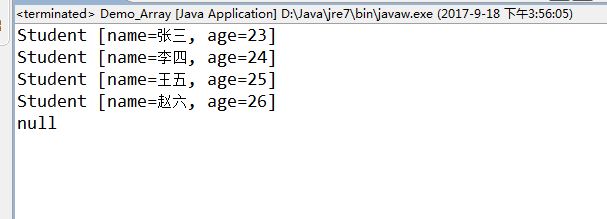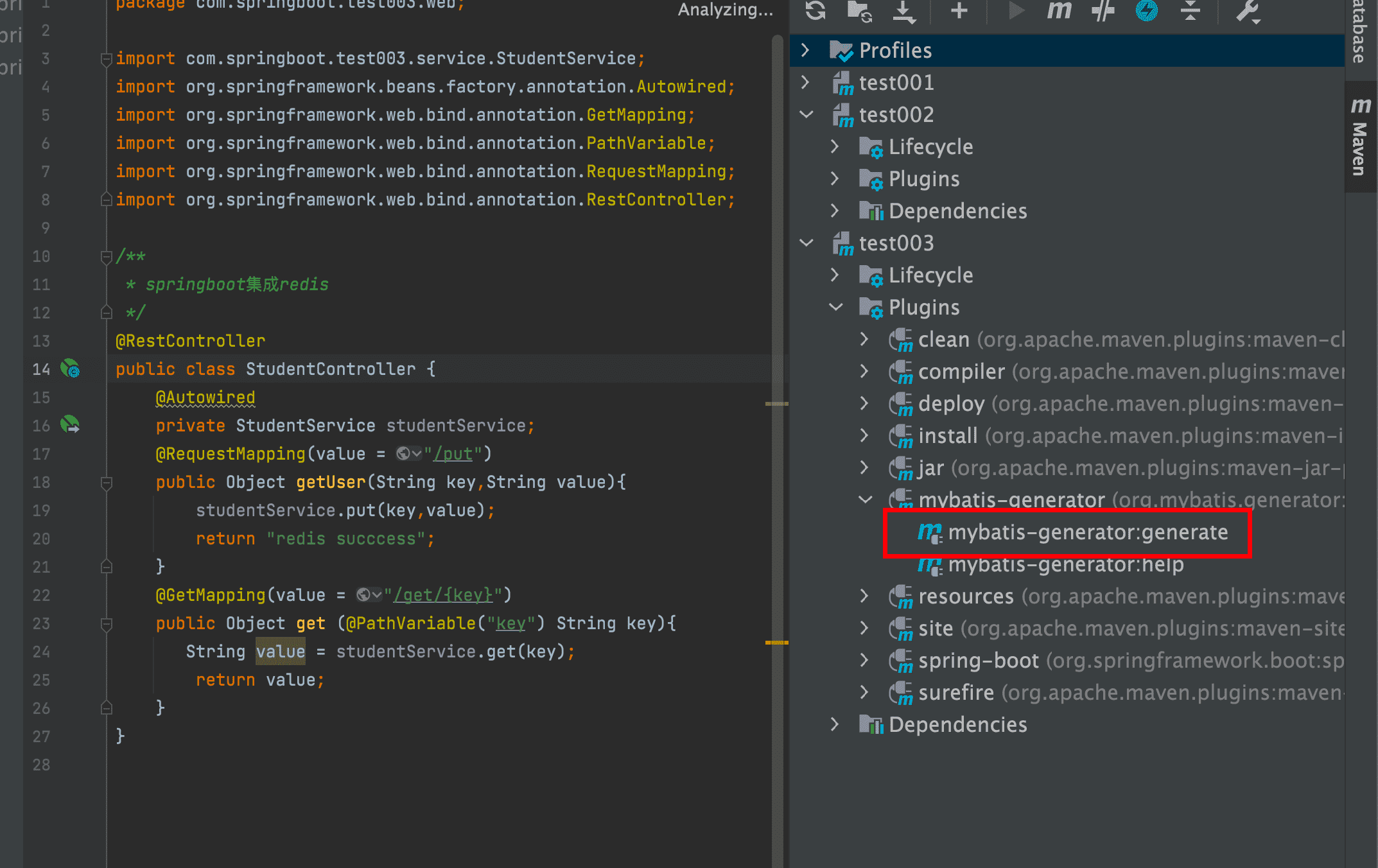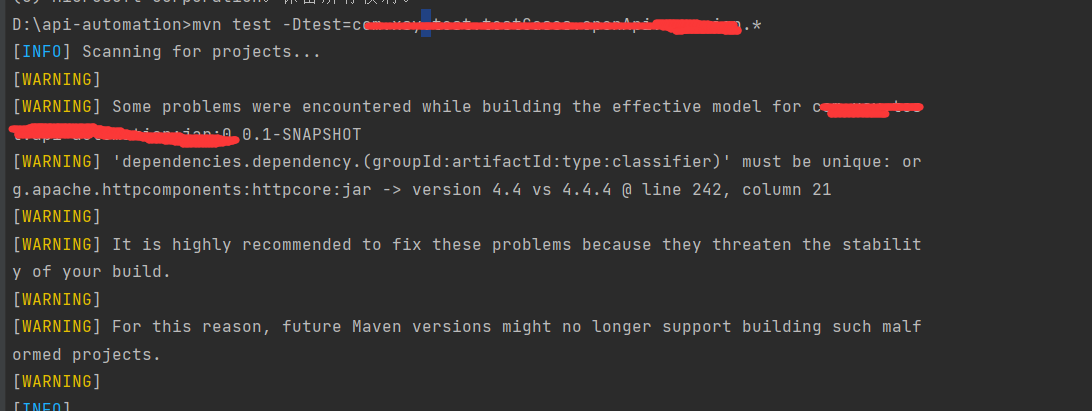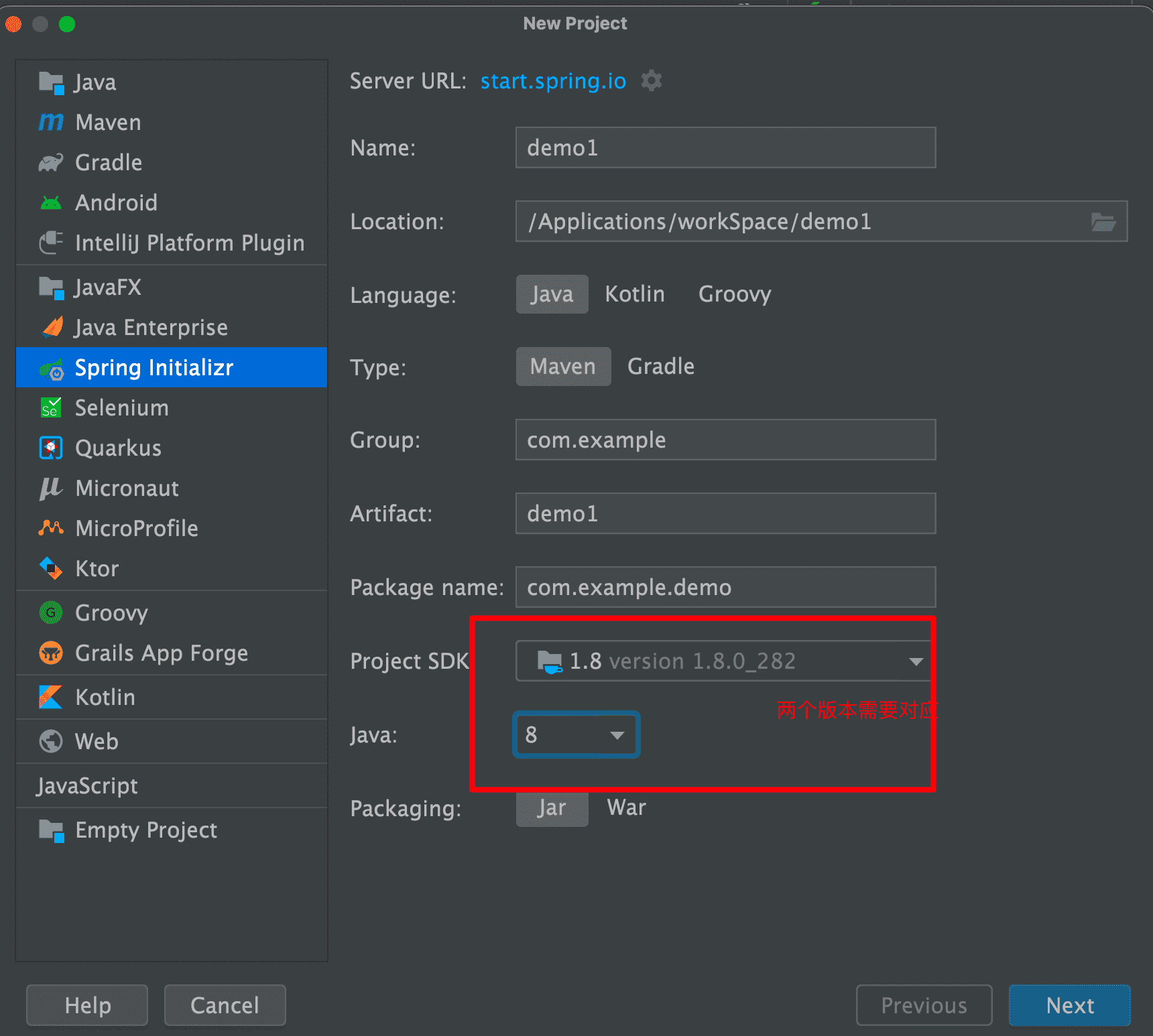结果示意图:

A:案例演示
- * 需求:我有5个学生,请把这个5个学生的信息存储到数组中,并遍历数组,获取得到每一个学生信息。
- Student[] arr = new Student[5]; //存储学生对象
- arr[0] = new Student(“张三”, 23);
- arr[1] = new Student(“李四”, 24);
- arr[2] = new Student(“王五”, 25);
- arr[3] = new Student(“赵六”, 26);
- arr[4] = new Student(“马哥”, 20);
* B:画图演示
- * 把学生数组的案例画图讲解
- * 数组和集合存储引用数据类型,存的都是地址值
学习过程
1、首先,需要创建一个bean包 在bean包下建一个student的类,用于后面创建对象
student类的案例代码:
- package com.fenxiangbe.bean;
- public class Student {
- private String name;//私有一个名字变量
- private int age; //私有一个年龄变量
- public Student() {//创建一个空参构造
- super();
- }
- public Student(String name, int age) {//创建一个有参构造
- super();
- this.name = name;
- this.age = age;
- }
- //创建get和set方法
- public String getName() {
- return name;
- }
- public void setName(String name) {
- this.name = name;
- }
- public int getAge() {
- return age;
- }
- public void setAge(int age) {
- this.age = age;
- }
- @Override
- public String toString() {//toString方法重写了父类的方法
- return “Student [name=” + name + “, age=” + age + “]”;
- }
- }
2、新建一个collection的包,在collection包下建一个array类,用于创建对象,打印结果
案例代码:
- package com.fenxiangbe.collection;
- import com.fenxiangbe.bean.Student;
- public class Demo_Array {
- /**
- * A:案例演示
- * 需求:我有5个学生,请把这个5个学生的信息存储到数组中,并遍历数组,获取得到每一个学生信息。
- *
- Student[] arr = new Student[5]; //存储学生对象
- arr[0] = new Student(“张三”, 23);
- arr[1] = new Student(“李四”, 24);
- arr[2] = new Student(“王五”, 25);
- arr[3] = new Student(“赵六”, 26);
- arr[4] = new Student(“马哥”, 20);
- for (int i = 0; i < arr.length; i++) {
- System.out.println(arr[i]);
- }
- * B:画图演示
- * 把学生数组的案例画图讲解
- * 数组和集合存储引用数据类型,存的都是地址值
- */
- public static void main(String[] args) {
- Student[] arr = new Student[5];//创建一个长度为5的引用数据类型
- arr[0] = new Student(“张三”,23);//创建一个学生对象,储存在数组的第一个位置
- arr[1] = new Student(“李四”,24);//创建一个学生对象,储存在数组的第二个位置
- arr[2] = new Student(“王五”,25);//创建一个学生对象,储存在数组的第三个位置
- arr[3] = new Student(“赵六”,26);//创建一个学生对象,储存在数组的第四个位置
- //创建了5个引用数组对象,只给四个赋值,最后一个的打印结果为null
- for (int i = 0; i < arr.length; i++) {
- System.out.println(arr[i]);
- }
- }
- }
案例在内存中的运行内存图:

 吾爱乐享
吾爱乐享












评论前必须登录!
注册